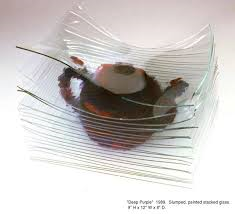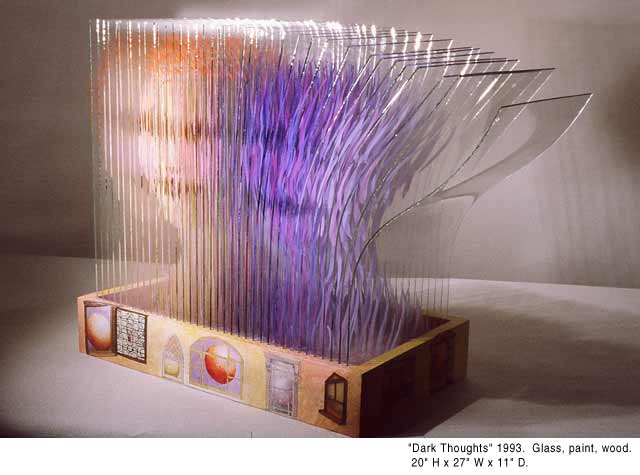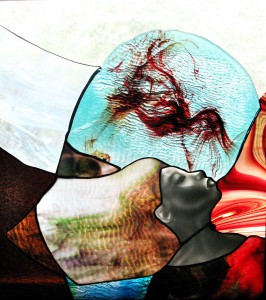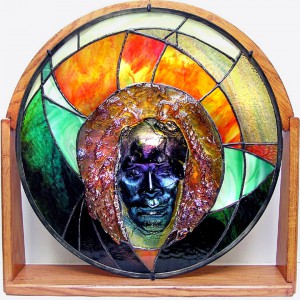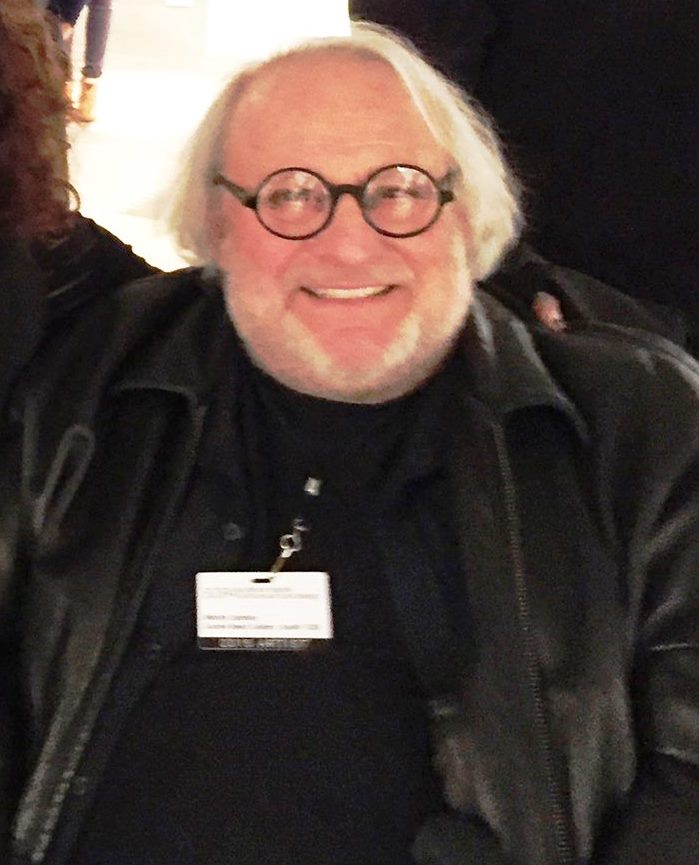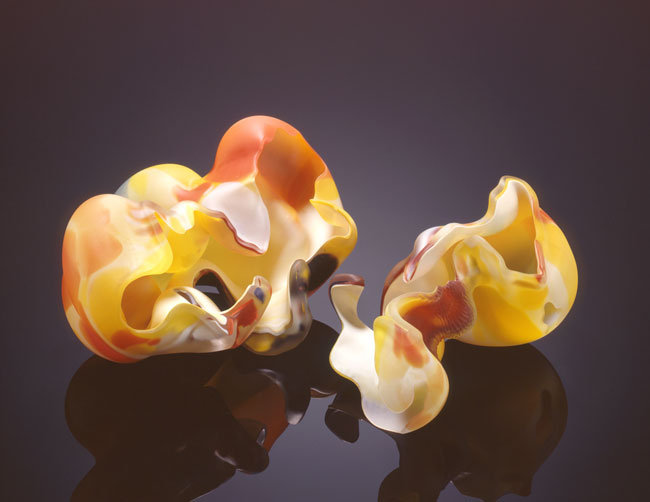Artist/sculptor Carol Cohen, 81, passed away at her home in Cambridge, MA, on April 12, of lung cancer. In 1970, she began her career as an artist, working first with paint, then clay, paper, vinyl, and steel before developing innovative techniques in painting stacked glass, which led to her work being placed in many prestigious collections including the Boston Museum of Fine Arts; Renwick Gallery, National Museum of American Art, Washington, DC; and Mint Museum of Art, Charlotte, NC.
Carol described her signature layered imagery process:
Ordinary window glass is the best surface to take paint and allow the most light to go through. When I first figured out the technique (1982) I tried acrylic sheet/Plexiglas; but it sagged in the middle, scratched easily, was a dust magnet, and the edges had to be sawed and sanded.Glass was a practical choice: it costs less than plexi, is harder so that cleaning it doesn’t create scratches, is more rigid so it doesn’t sag when supported by its corners, is less electrostatic, and is easier to cut by simple scoring-and-breaking. It is also beautifully green when assembled in layers — that was an unexpected plus.
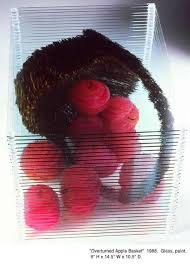 She retired from making art in 2008.
She retired from making art in 2008.
“Though the mystery contained in these non-boxes is easily explained, it continues to intrigue the eye. You can view the work from any angle but one: if your eye parallels the edges of the glass sheets the internal image vanishes, and all you see is a stack of green-edged glass sheets. Now-you-see-it, now-you-don’t. Prestidigitation with glass.”
–Paul Hollister, “Exploration of Inner Space”, Neues Glas magazine, 4/88.
